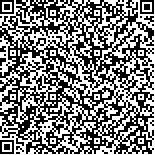Archive > Volume 39 Issue 3 > 2013,39(3):340-346. DOI:10.7519/j.issn.1000-0526.2013.03.008 Prev Next
Numerical Simulation for the Urbanization Effects on an Extreme Rainfall in Beijing
- Article
- Figures
- Metrics
- Preview PDF
- Reference
- Related
- Cited by
- Materials
Abstract:
Based on replacing the original USGS land use data with a new urban land use dataset, the 1 km gridpoint interval WRF model and its coupling Urban Canopy Model (UCM) were used to simulate an extreme rainfall event that occurred in Beijing City on 23 June 2011. The result of the sensitivity experiment more agrees with the reality than the control experiment. Difference in surface energy balance between urban and rural areas shows that in daytime urban area absorbs more solar radiation for the area exhibits lower values of albedo. Due to the lack of vegetation in the urban, which inhibits cooling by evapotranspiration, most part of the incoming energy is partitioned into sensible heat flux to heat the urban region. The urban expansion reduces natural vegetation cover, and then it can help to decrease ground evaporation and local water vapor supply, enlarge surface sensible heat flux, deepen PBL height and enhance the mixing of water vapor. Hence it is not conducive to the occurrence of the rainfall.
Keywords:
Project Supported:
Clc Number:


Mobile website









